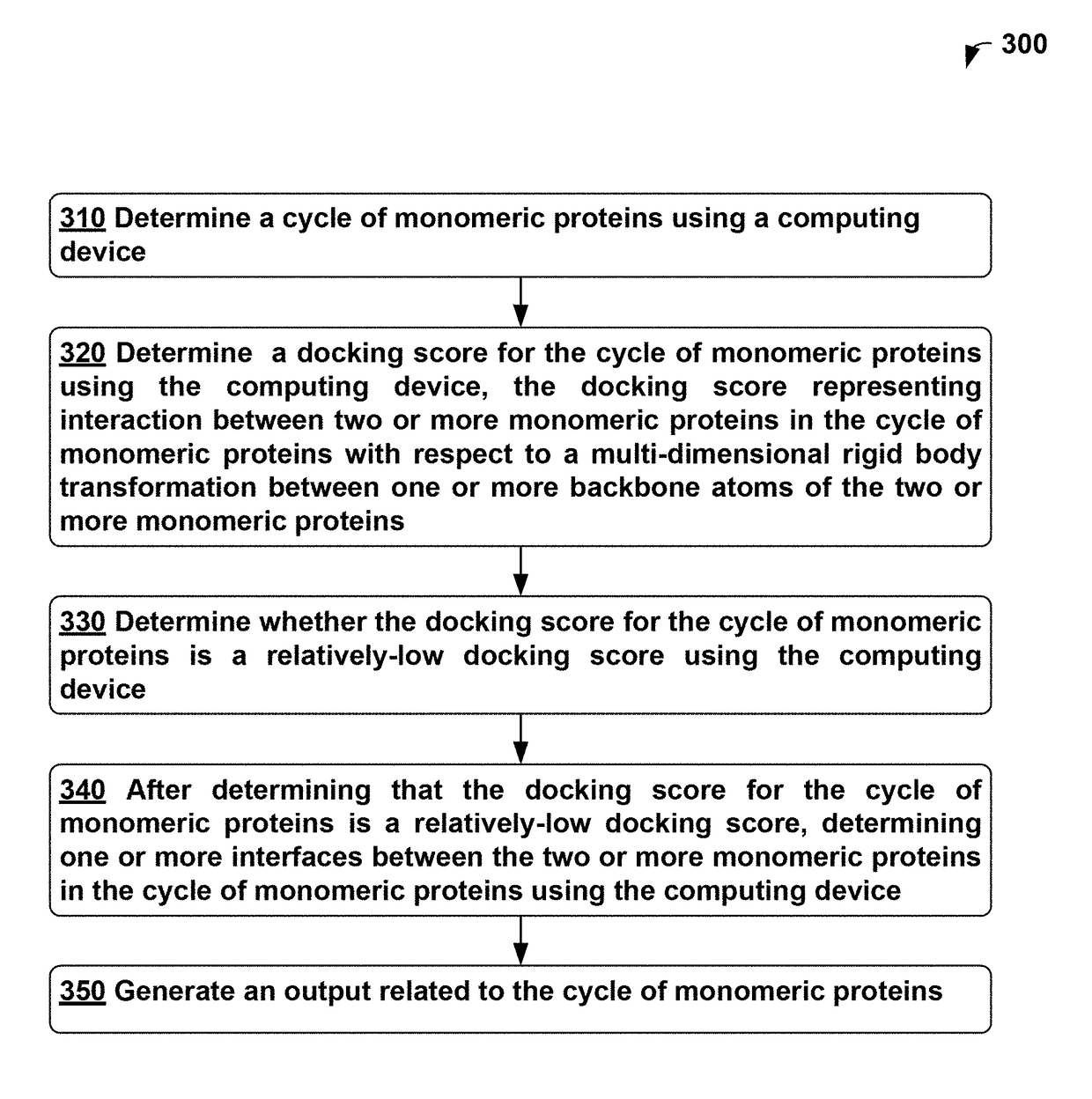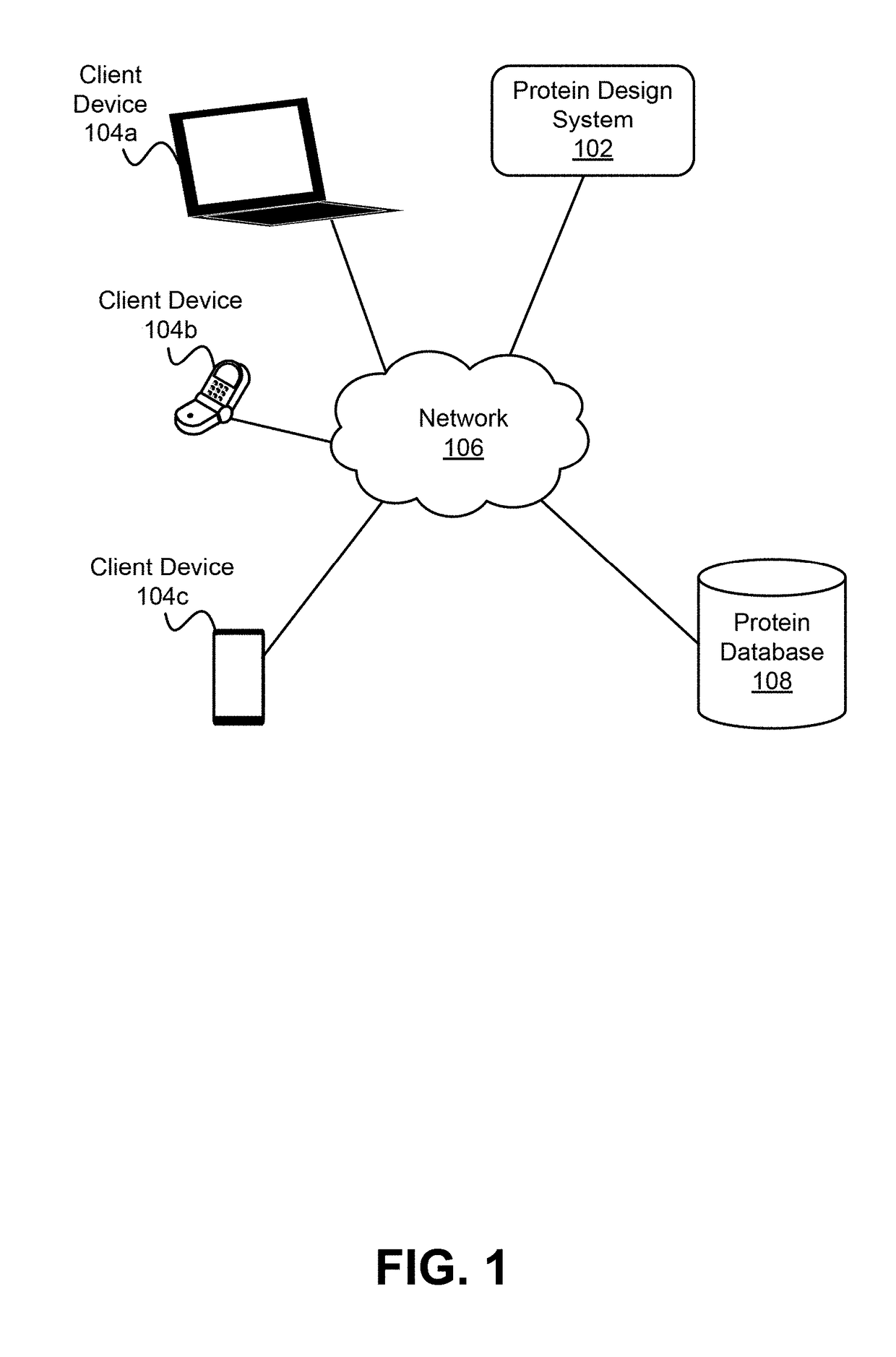Computational Design of Self-Assembling Cyclic Protein Homo-oligomers
a cyclic protein and protein technology, applied in the field of computational design of self-assembling cyclic protein homooligomers, can solve the problem of no systematic approach to design cyclic homooligomers
- Summary
- Abstract
- Description
- Claims
- Application Information
AI Technical Summary
Benefits of technology
Problems solved by technology
Method used
Image
Examples
examples
[0353]Self-assembling cyclic protein homo-oligomers play important roles in biology and the ability to generate custom homo-oligomeric structures could enable new approaches to probe biological function. Here we report a general approach to design cyclic homo-oligomers that employs a new residue pair transform method for assessing the designability of a protein-protein interface. This method is sufficiently rapid to allow systematic enumeration of cyclically docked arrangements of a monomer followed by sequence design of the newly formed interfaces. We use this method to design interfaces onto idealized repeat proteins that direct their assembly into complexes that possess cyclic symmetry. Of 96 designs that were experimentally characterized, 21 were found to form stable monodisperse homo-oligomers in solution, and 15 (4 homodimers, 6 homotrimers, 6 homotetramers and 1 homopentamer) had solution small angle X-ray scattering data consistent with the design models. X-ray crystal struc...
PUM
| Property | Measurement | Unit |
|---|---|---|
| Fraction | aaaaa | aaaaa |
| Length | aaaaa | aaaaa |
Abstract
Description
Claims
Application Information
 Login to View More
Login to View More - R&D
- Intellectual Property
- Life Sciences
- Materials
- Tech Scout
- Unparalleled Data Quality
- Higher Quality Content
- 60% Fewer Hallucinations
Browse by: Latest US Patents, China's latest patents, Technical Efficacy Thesaurus, Application Domain, Technology Topic, Popular Technical Reports.
© 2025 PatSnap. All rights reserved.Legal|Privacy policy|Modern Slavery Act Transparency Statement|Sitemap|About US| Contact US: help@patsnap.com



